Christmas at the Newport Mansions
Experience the magic of Christmas at the Newport Mansions with festive tours of The Elms, The Marble House, and The Breakers.
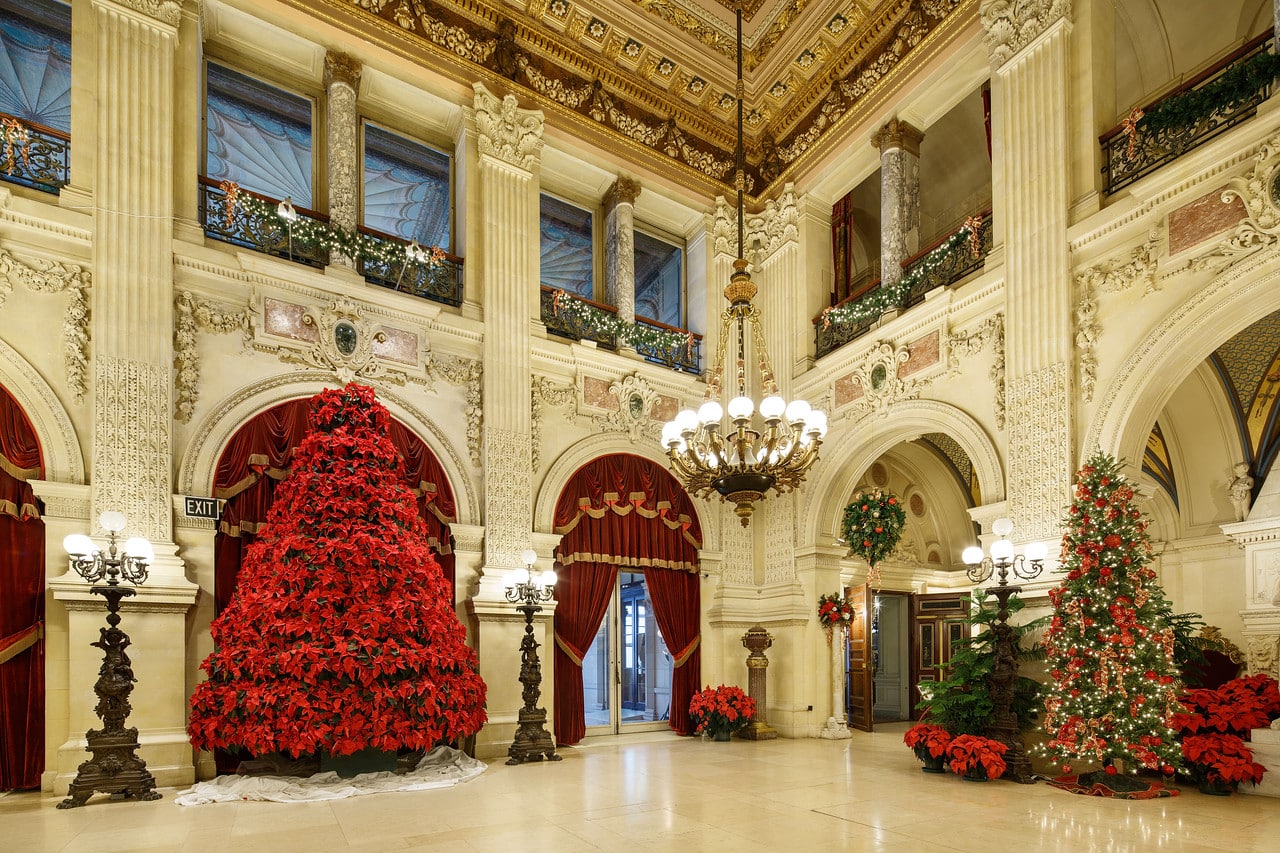
Coffee By Design | Portland, Maine
Photo Credit : Katherine KeenanThere’s much to be said for a cozy country Christmas, for simple pleasures and silent nights. But on a recent gray day, I was craving a concentrated dose of over-the-top holiday wonder. I headed down to Newport to take a tour of three of its most famous mansions: The Elms, The Marble House, and The Breakers, which are open and decorated for the holidays from late November through early January, making them a perfect destination for the entire holiday season. I saw jaw-dropping settings that glimmered and sparkled and learned about the people who built these monuments of wealth. So before the holidays are over, come join me on a tour of a Gilded Age Christmas.
The Magic of Christmas at the Newport Mansions
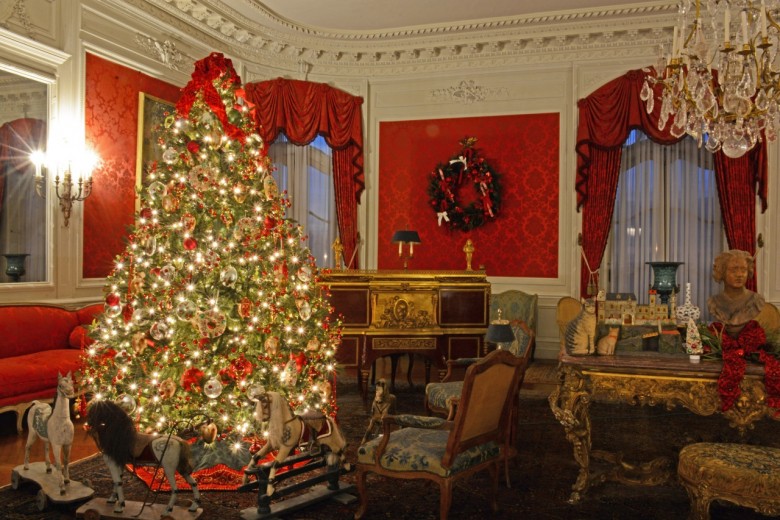
Photo Credit : The Preservation Society of Newport County
The Elms
I began my visit at The Elms, which was built as a summer retreat for coal baron Edward Julius Berwind and his wife, Herminie and completed in 1901. Designed by architect Horace Trumbauer to resemble the French chateau d’Asnieres, the 60,000-square-foot house remained in the family until 1961. The Preservation Society of Newport County has owned the house and opened it to the public since 1962.
Like the rest of the houses on the tour, The Elms was never actually used at Christmastime. The Berwinds were based in New York and would have celebrated Christmas there or elsewhere on their travels. But Jim Donahue, horticulturist for the Preservation Society, dresses the mansions up like giant jewel boxes, not sticking to strict period authenticity, but letting the rooms inspire color schemes and motifs. Over five weeks leading up to the holiday season, Donahue and his team decorate 40 rooms in three houses with fresh flowers, (artificial) trees, garlands, even real gingerbread houses (more on that later). “We don’t follow any period style, we follow our fancy,” he laughs. But he does look at historic photographs and existing collections for inspiration. In fact, the Elms’s library displays turn-of-the-century toys that were donated by the Berwind family.
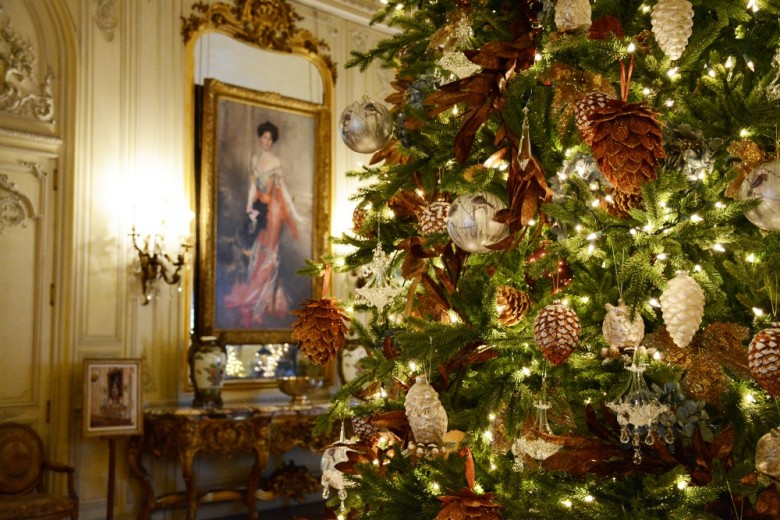
Photo Credit : The Preservation Society of Newport County
One of the challenges of Donahue’s job is creating decorations that stand out against the mansions’ ornate interiors. “You have to compete with the existing decorations,” he says. “In order to make an impact, you have to use a lot. We don’t remove anything from the rooms during the holidays. We leave it all and have to work around it.
Every room in each house has at least a holiday mantelpiece arrangement that’s coordinated to match the color scheme or echo some architectural element or some facet of the personality of the person who once lived there.
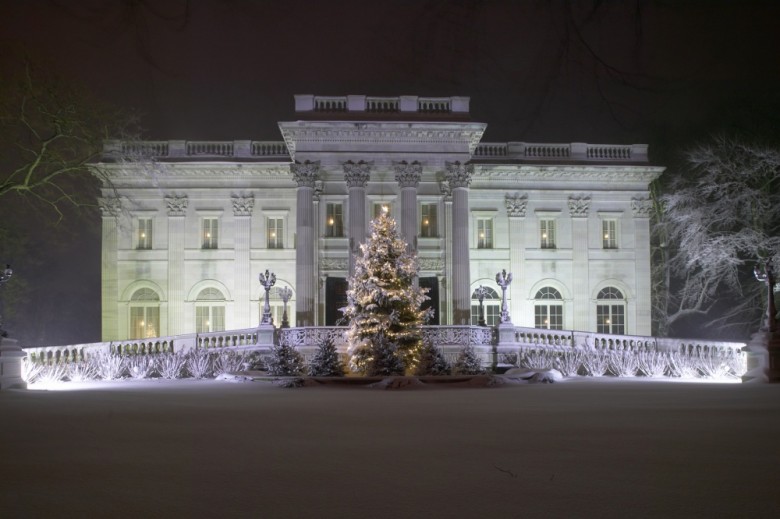
Photo Credit : The Preservation Society of Newport County
The Marble House
We moved on to The Marble House, which was built between 1888 and 1892 for Mr. and Mrs. William K. Vanderbilt (William was the brother of Cornelius, who built The Breakers nearby) and ushered in the era of opulent palaces and grand society galas. Prior to this, Newport had been a quieter summer colony where wealthy families built more modest wood cottages. The Vanderbilts divorced in 1895, but because the estate had been a gift from Mr. Vanderbilt to his wife Alva for her 39th birthday, she kept it.
The Marble House is modeled after the Petit Trianon, Marie Antoinette’s private pleasure palace on the grounds of Versailles. It has 50 rooms and cost $11 million dollars to build, of which $7 million was spent on the 500,000 cubic feet of marble that give the mansion its name. It was here that Alva invited Charles Spencer-Churchill, 9th Duke of Marlborough to court her daughter, Consuelo. The two were married, against Consuelo’s wishes, in 1895. But this marriage of wealthy American heiress to titled but cash-poor British noble, became a common arrangement during the Gilded Age (and was depicted in the popular PBS series Downton Abbey).
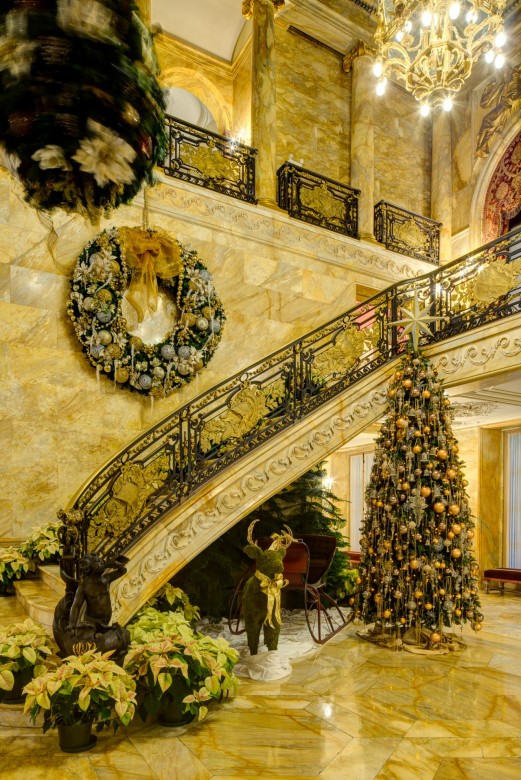
Photo Credit : The Preservation Society of Newport County
Alva called The Marble House her “temple to the arts” in America. To that end, she had architect Richard Morris Hunt design a room around a collection of more than 300 Medieval and Renaissance art objects that she collected in Europe. Much of that collection is now on display at the Ringling Museum in Sarasota, FL, but the remaining pieces and stained glass windows inspired the massive tree in this room.
In her later years, Alva repented of Consuel’s forced marriage and became an ardent supporter of women’s rights, hosting suffrage rallies on the grounds of The Marble House. When Alva died in 1933, at age 80, her funeral was conducted entirely by women.
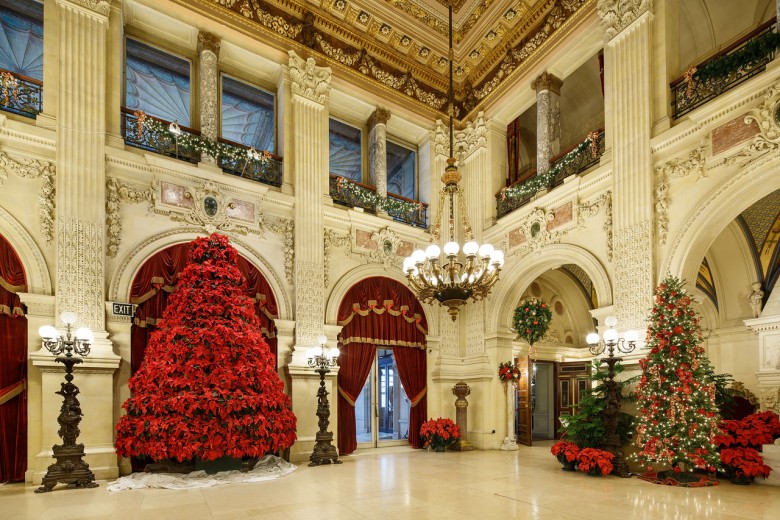
Photo Credit : The Preservation Society of Newport County
The Breakers
The last mansion on our tour is the grandest: The Breakers was built by Cornelius Vanderbilt II, who made his fortune in shipping and railroads. Like his brother, William, Cornelius hired Richard Morris Hunt to design his estate, but his was grander, with 70 rooms and a style inspired by Italian Renaissance architecture.
To get a sense of the wealth behind these palaces, consider this: The panels pictured here in the Gothic Room were lined entirely in platinum. They have luster unlike anything you’ve seen before.
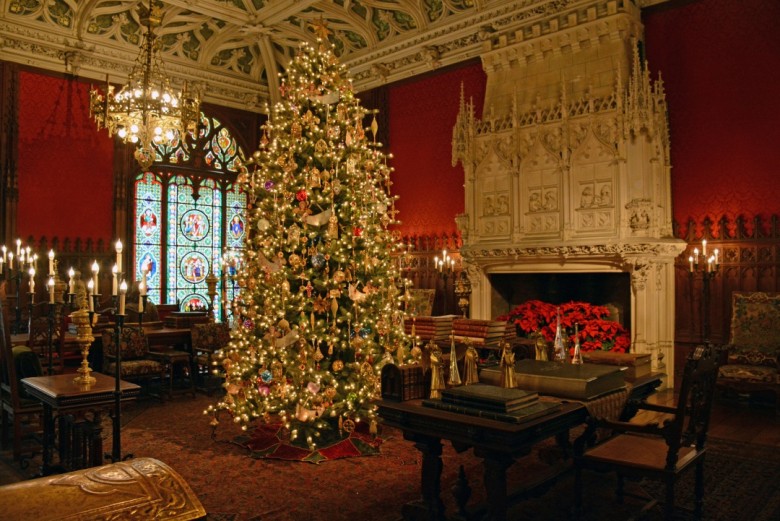
Photo Credit : The Preservation Society of Newport County
In order to speed construction of The Breakers, the Music and Morning rooms were designed and built by Richard Bouwens Van der Boyen at his salon in Paris, then, dismantled and then shipped back to Newport. This allowed the most ornate rooms to be constructed simultaneously while Hunt prepared the frame of the house on-site.
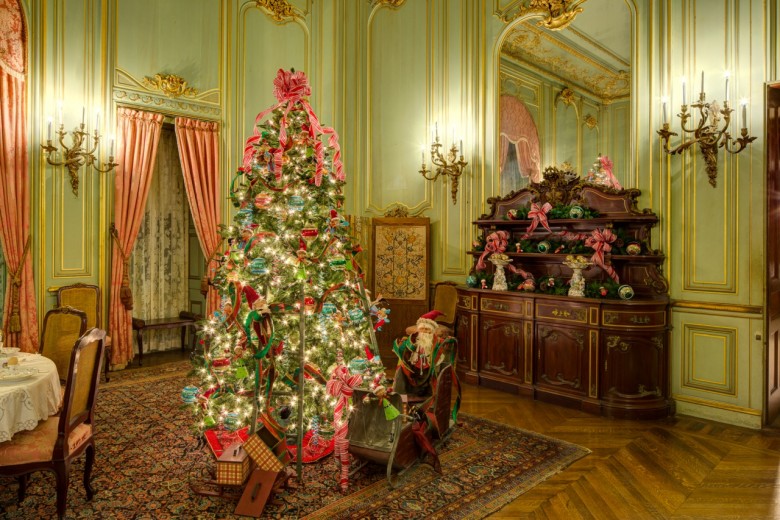
Photo Credit : The Preservation Society of Newport County
One of the most charming stops on The Breakers tour is in the kitchen, where the Preservation Society displays gingerbread replicas of the mansions made by local pastry chefs, but the highlight of The Breakers is the massive 15-foot tree constructed of 150 live poinsettias. The plants must be watered weekly and replaced three times during the six-week holiday season.
Curious about who supplies all these fresh flowers, I asked my guide, Andrea Carneiro, to show me the Society’s greenhouses, and was lucky enough to get a behind-the-scenes tour. Inside, we found hundreds of poinsettias and grand floral arrangements waiting to be moved up to the houses. We also met Jeffrey Curtis, director of gardens and grounds, who manages not only the holiday decorations, but the expansive lawns and elaborate gardens at each of the mansions.
The society hosts frequent events, including a Holiday Dinner Dance, meaning Newport will be merry and bright for many days to come.
Have you ever experienced Christmas at the Newport Mansions?
The Newport Mansions and The Preservation Society of Newport County.
401-847-1000; newportmansions.org




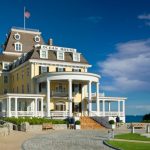



Am looking for a Christmas get a way in New England. Lodging for Xmas eve, Xmas day week end .Do you have or feature any specials. Any web sites I can look at. Need to include meals or nearby restaurants. Your recommendations is appreciated. Thank you.
I wish with all my heart that I could tour these places. What a memory to cherish for the rest of your life. Such beauty!
The Breakers was actually built for Cornelius Vanderbilt II, the grandson of Commodore Vanderbilt. The Commodore died in 1877 (15 years before The Breakers was built) and would not have approved. Although filthy rich, he disliked “showing off” his wealth.
So beautiful, so much to see and do. Our clients LOVE Newport!
Newport is filled with history and untold beauty.. I once visited and left with the memory of it forever… such a wonderful town.
New England wherever is Christmas always!
During our yearly trip to New England my husband and I toured these homes and it was wonderful. Before he passed away we took the trip every year and tried yo see as much of the history as we could. I have missed those trips but have great memories and pictures. Everyone that can should visit all of New England and that area.
While attending the Naval War College in 1986/87 we had several functions take place at the mansions, including Christmas ball with a full navy band providing music, and all the officers in Full evening dress uniforms with sashes, cummerbunds, and medals. The ladies wore beautiful gowns (military women wore their uniforms of course), and the caterers put on a feast that would rival a fancy wedding. Wonderful memories of the beautiful buildings, and the chance to be part of a historic Christmas. Newport does a full month of events to celebrate December, so consider a visit.